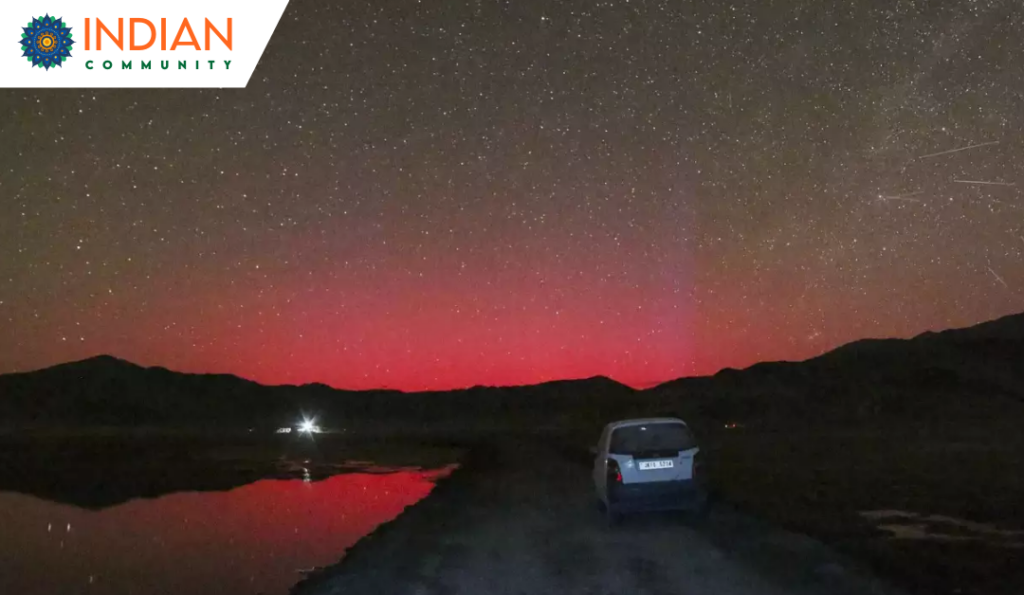In a breathtaking cosmic ballet, the Earth became the stage for a celestial spectacle as powerful solar storms unleashed a dazzling display of the northern lights and southern lights, captivating audiences worldwide.
On Friday, observers across various corners of the globe were treated to a rare sight as the night sky came alive with vibrant hues, courtesy of the impact of potent solar activity.
Among the locales graced by this enchanting phenomenon was Ladakh’s Hanle Dark Sky Reserve, where a mesmerizing red auroral arc adorned the heavens, casting an otherworldly glow over the landscape.
Distinguished by their static nature and fixed color, these arcs are an uncommon variation of traditional auroras, manifesting uniquely during periods of intense geomagnetic storms induced by solar disturbances.
Auroras, natural light displays in the Earth’s atmosphere, are typically observed in high-latitude regions near the Arctic and Antarctic, resulting from disruptions in the magnetosphere triggered by solar wind activity.
In the remote expanse of Hanle, usually cloaked in solitude, the aurora borealis unfurled its ethereal curtains, treating onlookers to a spellbinding dance beneath the stars.
From Russia to Australia and Germany, the spectacle traversed continents, leaving spectators awestruck by the interplay of solar-charged particles with the Earth’s magnetic field and atmosphere.
In Australia, the southern lights painted the night sky with vivid red and purple hues, casting a magical aura over the horizon, with Tasmania standing witness to an exceptional showcase of nature’s grandeur.
Meanwhile, in Russia, the aurora borealis shimmered with its characteristic curtains of light, weaving a tapestry of enchantment across the celestial canvas.
Similarly, in Germany’s northern reaches, the northern lights cast an otherworldly glow, transforming the landscape into a scene reminiscent of a fairy tale.
The breathtaking spectacle was the result of a powerful solar storm triggered by a coronal mass ejection (CME) from the Sun, unleashing a torrent of energy into the cosmos. As charged particles from the Sun interacted with the Earth’s magnetic field and atmosphere, the stage was set for an unforgettable performance.
Five colossal Coronal Mass Ejections (CMEs), the most significant solar eruptions, propelled a massive influx of plasma and material through the solar system, with projections indicating their imminent encounter with Earth over the weekend.
Researchers are closely monitoring the evolution of sunspot AR3664, which has expanded to rival the historic Carrington sunspot observed in the 1800s. Serving as the focal point for all five CMEs currently en route to Earth, AR3664 has drawn keen interest from scientists seeking to unravel the mysteries of solar dynamics.
Captured by the Solar and Heliospheric Observatory, a coronagraph movie has provided a stunning visual record of these colossal eruptions as they erupt from the Sun’s surface, marking a milestone in our understanding of solar phenomena.

